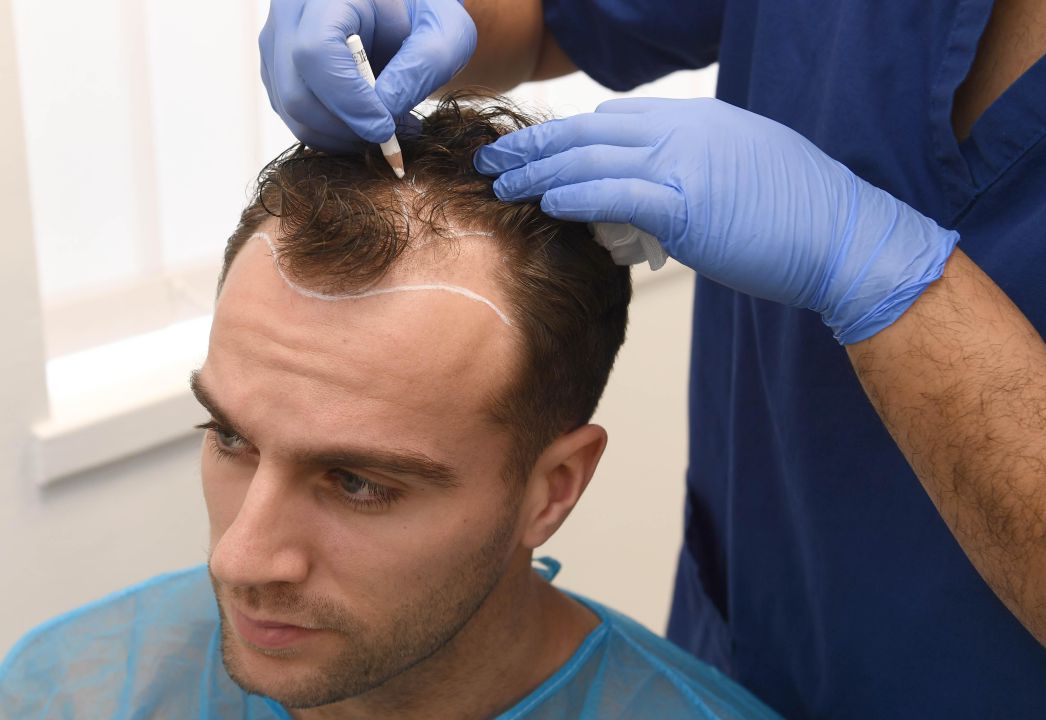
Hair loss is a common problem among men and women of all ages. Whether it's due to genetics, stress, or medical conditions, losing hair can be a major source of anxiety and self-consciousness. While there are many products and treatments on the market that claim to promote hair growth, few are as effective as a hair transplant.
A hair transplant is a surgical procedure that involves removing hair follicles from one area of the scalp (typically the back or sides) and transplanting them to an area where hair is thinning or balding. The procedure has been around for several decades, but advances in technology and techniques have made it safer and more effective than ever before.
The two most common types of hair transplants are follicular unit transplantation (FUT) and follicular unit extraction (FUE). FUT involves removing a strip of skin from the back of the scalp and then dissecting it into individual hair follicles. These follicles are then transplanted to the balding area. FUE, on the other hand, involves removing individual follicles directly from the scalp and transplanting them one by one.
Both FUT and FUE have their advantages and disadvantages, and the best method for each patient will depend on their individual needs and preferences. However, both methods are generally considered safe and effective, with a high success rate and minimal scarring.
One of the biggest advantages of a hair transplant is that it is a permanent solution to hair loss. Unlike topical treatments or medications that need to be used indefinitely to maintain results, a hair transplant provides a long-lasting and natural-looking solution. The transplanted hair will continue to grow and thicken over time, providing a fuller, more youthful appearance.
Another advantage of a hair transplant is that it requires minimal downtime. While the procedure itself can take several hours, most patients are able to return to work and normal activities within a few days. The transplanted area may be sore or tender for a few days, but this can usually be managed with over-the-counter pain medication.
It's important to note that not everyone is a good candidate for a hair transplant. Patients with advanced hair loss or scarring may not be able to achieve the results they desire, and those with certain medical conditions may not be eligible for the procedure at all. Additionally, the cost of a hair transplant can be significant, and it may not be covered by insurance.
If you're considering a hair transplant, it's important to do your research and find a reputable and experienced surgeon. Look for someone who specializes in hair restoration and has a proven track record of success. Ask to see before and after photos of their previous patients, and read reviews from other patients to get an idea of what to expect.
In conclusion, a hair transplant can be a life-changing procedure for those who are struggling with hair loss. It provides a permanent, natural-looking solution that requires minimal downtime and has a high success rate. If you're considering a hair transplant, be sure to do your research and find a qualified surgeon who can help you achieve the results you desire.
Hair transplant surgery can be an effective solution for those struggling with hair loss. However, like any surgical procedure, there are risks and potential complications that should be carefully considered. Here are some of the issues that should be taken into account before undergoing a hair transplant:
1-Eligibility: Not everyone is a good candidate for a hair transplant. The surgeon will evaluate your hair loss pattern, the quality of your donor hair, and your overall health to determine if you are a suitable candidate for the procedure. People with certain medical conditions or those taking certain medications may not be eligible.
2-Cost: Hair transplant surgery can be expensive, and it is often not covered by insurance. The cost can vary depending on the surgeon's experience, the type of procedure used, and the number of grafts required. Patients should be prepared for the financial commitment before deciding to undergo the procedure.
3-Potential complications: While hair transplant surgery is generally safe, there are risks involved, as with any surgical procedure. Possible complications include bleeding, infection, scarring, and nerve damage. It is important to discuss these risks with your surgeon before the procedure.
4-Recovery time: While hair transplant surgery has a relatively short recovery time compared to other surgeries, patients should still be prepared for some downtime. The scalp may be tender and swollen for a few days after the procedure, and patients should avoid strenuous activity for a few weeks. Patients may also need to take time off work to recover.
5-Results: While hair transplant surgery can provide long-lasting results, patients should have realistic expectations. The transplanted hair will take time to grow and may not be as thick as the surrounding hair. Some patients may require multiple procedures to achieve their desired results.
6-Post-operative care: Patients will need to follow specific instructions after the procedure to ensure proper healing and optimal results. This may include avoiding direct sunlight, using specialized shampoos and conditioners, and avoiding certain activities for a period of time.
In conclusion, while hair transplant surgery can be an effective solution for hair loss, it is important to carefully consider the potential risks and complications before deciding to undergo the procedure. Patients should be prepared for the financial commitment, the recovery time, and the need for post-operative care. It is also important to find a qualified and experienced surgeon who can help you achieve the best possible results.